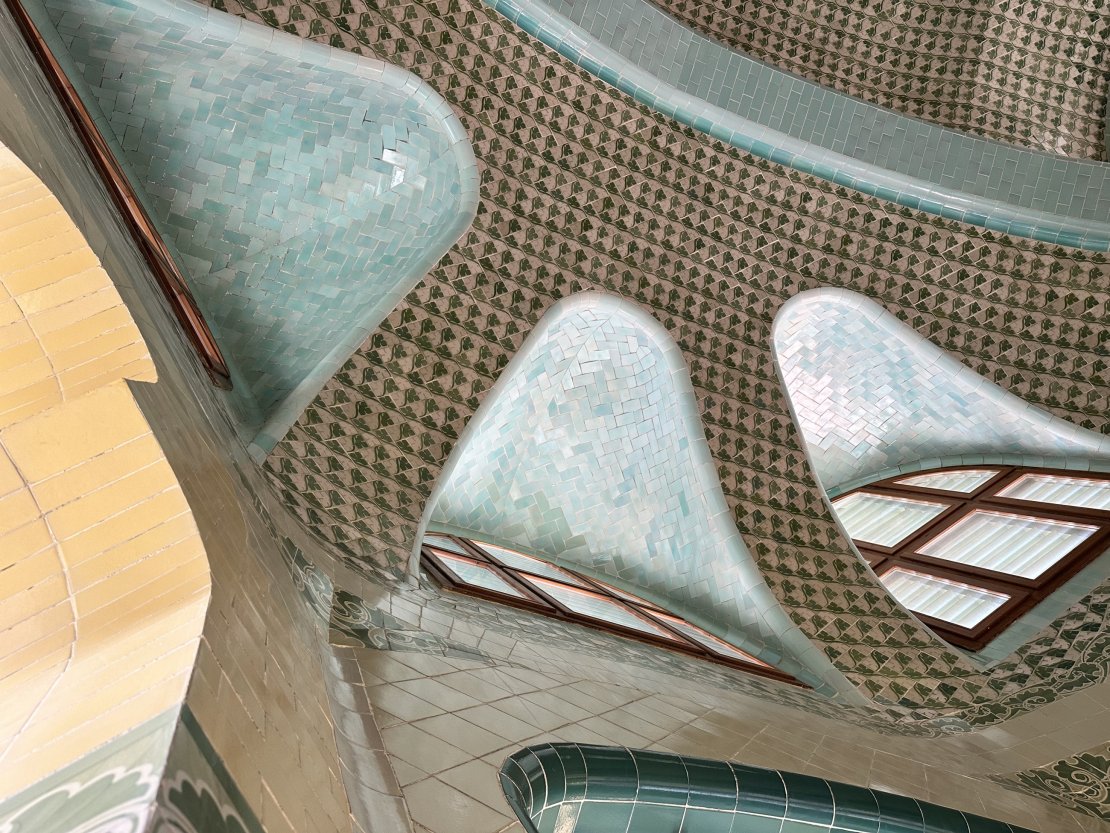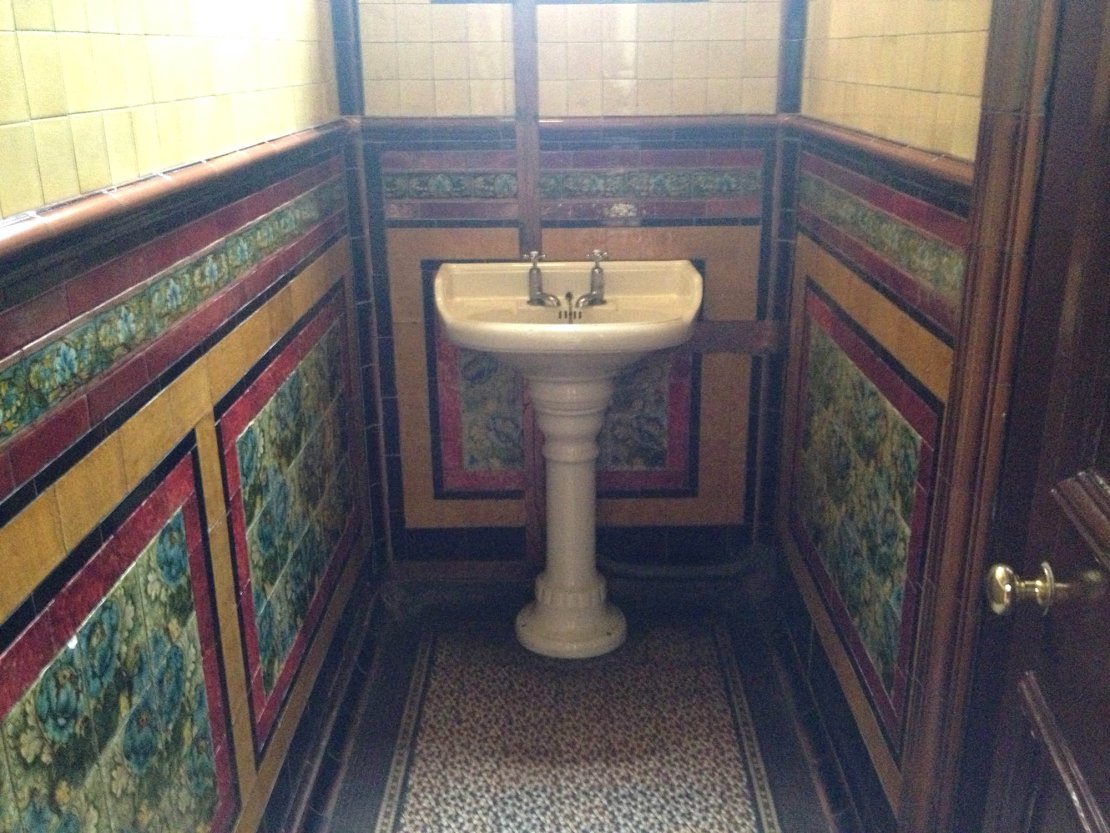The durability of Victorian tiles may be seen in how well they have weathered the passage of time, from their beginnings in Gothic Revival architecture to their mass manufacture throughout the Industrial Revolution.
Although they are still as fashionable today as they were when they first came into style in the 19th century, the story of this geometric trend has certainly developed over the past two centuries.
It is possible to trace the origin of Victorian tiles back to the Middle Ages. This era significantly impacted what we now refer to as "Gothic Revival" architecture. In addition to the pointed arches and steeply sloping roofs, gothic architecture frequently featured patterned flooring with ornate fleur-de-lys and quatrefoils designs.
The displays were common in cathedrals, monasteries, and the residences of the wealthy during the Middle Ages; nevertheless, they fell out of favour until the Victorian era, when they were once again brought to widespread usage.
Because these tiles, referred to as 'encaustic,' were created by layering different colours of clay, they carried a significant price tag that could only be afforded by the wealthy. As a result, a more cost-effective method of manufacture was required.
Flooring with geometric Victorian patterns
In order to make Victorian wall and floor tiles more affordable, manufacturers started producing them in a single colour rather than a number of different tones. The latter method was an expensive one, while the former allowed for the use of two or less expensive tiles in conjunction with one another to create a pattern that was repeated.
As a direct consequence of this, geometric flooring, in which each tile only had a single colour, became a lot cheaper to produce in large quantities. This was made possible, in no small part, by the Industrial Revolution, which was taking place simultaneously and was in full swing.

What Kinds of Designs Did Traditional Victorian Tiles Have?
Many of the early Victorian tiles had a black-and-white pattern, which was frequently in the form of a chequerboard. The Victorians were famed for their use of geometric patterns in their floor tiles, which typically included designs such as squares, rectangles, diamonds, and octagons.
Mosaic tiles were popular and consisted of individual small shapes, often less than one inch square, and were used to create intricate designs and patterns. Mosaic tiles were often used on floors, where they could create a visually stunning effect. Mosaic tiles were also used in walls and ceilings, where they could add a touch of elegance and sophistication to any space.
A popular style of Victorian tile was the encaustic tile. Encaustic tiles were created by pressing together multiple layers of coloured clay, resulting in a tile with a pattern that extended through the entire thickness of the tile. This technique allowed for intricate, multi-coloured designs that could withstand wear and tear. Encaustic tiles were used extensively in public buildings, such as train stations and schools, but were also popular in private homes. The patterns included scrolls in the style of a fleur-de-lys, flowers, birds, and figures from famous works of literature.
Where Can You Find Examples of Victorian Tiles?
People preferred homes and businesses during the Victorian era to have opulent and extravagant interiors when they could afford it; architecture likewise mirrored this overly decorated stage with spectacular constructions. People were not only enthusiastic about installing lavish chandeliers, tapestries, and woodwork throughout their homes, but they also asked that their floors be upgraded with intricate designs, colours, and textures.
The use of tiled floors was the most logical choice overall. They were resistant to damage and wear and tear. This made them suitable for use in Victorian-era homes, churches, and businesses.
The patterns that were embedded within each encaustic tile served as another source for the rich, complicated designs that were used to create a floor that was both functional and beautiful.
Why were tiles so popular in Victorian homes?
Tiles were used extensively in Victorian architecture for both practical as well as aesthetic reasons. One of the primary benefits of tiles was their durability and resistance to moisture, making them ideal for use in damp areas like bathrooms and kitchens. Additionally, tiles were relatively easy to clean, making them a hygienic choice for public spaces like hospitals and schools.
Beyond their practical applications, tiles were also used as a decorative element in Victorian architecture. Tiles were employed to add colour and pattern to otherwise plain surfaces, such as walls, floors, and fireplaces. Tile designs ranged from simple geometric shapes to intricate floral and figurative motifs. Many Victorian tiles were hand-painted or handcrafted, giving them a unique and individual character.

Other types of Victorian tiles
Victorian tiles were not limited to just traditional ceramic materials. Many Victorian architects also incorporated decorative tiles made from other materials, such as terracotta and marble. Terracotta tiles were often used in the construction of Victorian buildings, providing a lightweight and durable material that could be moulded into intricate shapes and designs. Marble tiles were also popular in Victorian architecture, particularly for decorative purposes, due to their natural beauty and unique veining patterns.
In conclusion, the use of tiles in Victorian architecture played an important role in both the practical and decorative aspects of building design. From encaustic tiles to mosaic tiles, Victorian architects had a wide variety of tile styles and materials to choose from when designing their buildings. Today, many of these tiles can still be seen in historic Victorian buildings, reminding us of the beauty and ingenuity of this iconic architectural style.


Be the first to add a comment...